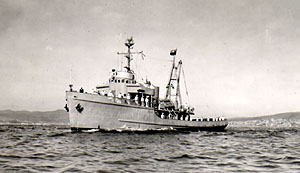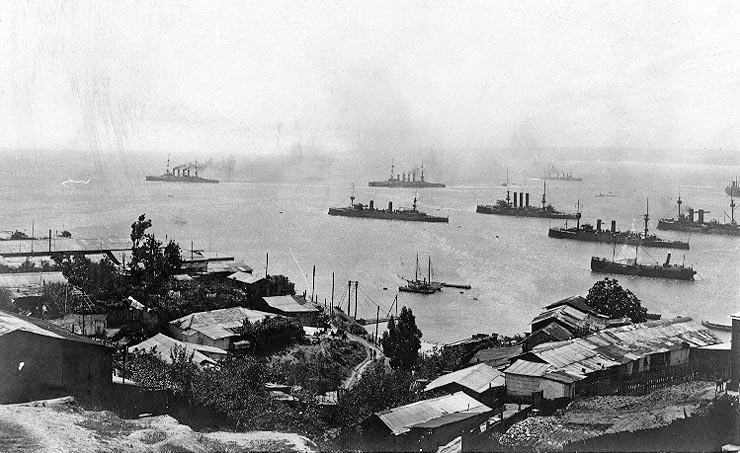|
Picton, Lennox, And Nueva
__NOTOC__ Picton, Lennox and Nueva () form a group of three islands (and their islets) at the extreme southern tip of South America, in the Chilean commune of Cabo de Hornos in Antártica Chilena Province, Magallanes and Antártica Chilena Region. Located in the Tierra del Fuego archipelago, they lie east of Navarino Island and are separated from the Argentine part of Isla Grande in the north by the Beagle Channel. They have an area of 170.4 km2 (Lennox), 105.4 km2 (Picton), 120.0 km2 (Nueva). Close to the islands are the islets of Snipe, Augustus, Becasses, Luff, Jorge, Hermanos, Solitario, Gardiner, Terhalten, Sesambre and others. History Robert Fitzroy and Phillip Parker King named the island "Picton" in honour of Thomas Picton, first British governor of Trinidad in the West-Indies. Lennox was discovered in 1624 by Dutch Admiral Schapenham who named the island Terhalten, after the officer who first sighted it. It was renamed later by Fitzroy and Parker ... [...More Info...] [...Related Items...] OR: [Wikipedia] [Google] [Baidu] |
Pacific Ocean
The Pacific Ocean is the largest and deepest of Earth's five oceanic divisions. It extends from the Arctic Ocean in the north to the Southern Ocean (or, depending on definition, to Antarctica) in the south, and is bounded by the continents of Asia and Oceania in the west and the Americas in the east. At in area (as defined with a southern Antarctic border), this largest division of the World Ocean—and, in turn, the hydrosphere—covers about 46% of Earth's water surface and about 32% of its total surface area, larger than Earth's entire land area combined .Pacific Ocean . '' Britannica Concise.'' 2008: Encyclopædia Britannica, Inc. The centers of both the |
Snipe Incident
The Snipe incident was a military incident that took place between Chile and Argentina during 1958 as a result of a disputed border line in the Beagle Channel. The two countries disagreed about the sovereign rights over the zone and Snipe, an uninhabitable islet between Picton Island and Navarino Island, claimed by both. Chileans call the waterway around the islet ''Beagle Channel'', but in Argentina they called it '' Moat channel'' on the grounds that the Beagle Channel, allegedly, went south around Navarino Island. In accordance with the Beagle Channel Arbitration and the Treaty of Peace and Friendship of 1984 between Chile and Argentina, it should be called Beagle Channel. The incident began on 12 January 1958 as the crew of the Chilean Navy transporter ''Micalvi'' built a lighthouse on the islet Snipe to improve navigation in the channel. The beacon of the lighthouse was installed on 1 May. In April, Isaac Francisco Rojas, Commander of Naval Operations of the Argentine Na ... [...More Info...] [...Related Items...] OR: [Wikipedia] [Google] [Baidu] |
Norway
Norway, officially the Kingdom of Norway, is a Nordic country in Northern Europe, the mainland territory of which comprises the western and northernmost portion of the Scandinavian Peninsula. The remote Arctic island of Jan Mayen and the archipelago of Svalbard also form part of Norway. Bouvet Island, located in the Subantarctic, is a dependency of Norway; it also lays claims to the Antarctic territories of Peter I Island and Queen Maud Land. The capital and largest city in Norway is Oslo. Norway has a total area of and had a population of 5,425,270 in January 2022. The country shares a long eastern border with Sweden at a length of . It is bordered by Finland and Russia to the northeast and the Skagerrak strait to the south, on the other side of which are Denmark and the United Kingdom. Norway has an extensive coastline, facing the North Atlantic Ocean and the Barents Sea. The maritime influence dominates Norway's climate, with mild lowland temperatures on the se ... [...More Info...] [...Related Items...] OR: [Wikipedia] [Google] [Baidu] |
SMS Leipzig
Three ships of the German ''Kaiserliche Marine'' (Imperial Navy) have been named SMS ''Leipzig'', after the Battle of Leipzig: * , a * , a that was sunk at the Battle of the Falkland Islands in 1914 * , a that was cancelled before completion in 1918 See also * , a during World War II World War II or the Second World War, often abbreviated as WWII or WW2, was a world war that lasted from 1939 to 1945. It involved the vast majority of the world's countries—including all of the great powers—forming two opposing ... {{DEFAULTSORT:Leipzig German Navy ship names ... [...More Info...] [...Related Items...] OR: [Wikipedia] [Google] [Baidu] |
Armored Cruiser
The armored cruiser was a type of warship of the late 19th and early 20th centuries. It was designed like other types of cruisers to operate as a long-range, independent warship, capable of defeating any ship apart from a battleship and fast enough to outrun any battleship it encountered. For many decades, naval technology had not advanced far enough for designers to produce a cruiser which combined an armored belt with the long range and high speed required to fulfill its mission. For this reason, beginning in the 1880s and 1890s, many navies preferred to build protected cruisers, which only relied on a light armored deck to protect the vital parts of the ship. However, by the late 1880s, the development of modern rapid-fire breech-loading cannon and high-explosive shells made the reintroduction of side armor a necessity. The invention of face-hardened armor in the mid-1890s offered effective protection with less weight than previously. Varying in size, the armored cruiser was ... [...More Info...] [...Related Items...] OR: [Wikipedia] [Google] [Baidu] |
German East Asia Squadron
The German East Asia Squadron (german: Kreuzergeschwader / Ostasiengeschwader) was an Imperial German Navy cruiser squadron which operated mainly in the Pacific Ocean between the mid-1890s until 1914, when it was destroyed at the Battle of the Falkland Islands. It was based at Germany's Kiautschou Bay concession in China. Background The Treaty of Peking of September 1861 between the Kingdom of Prussia and China allowed Prussian warships to operate in Chinese waters. As East Asia grew in economic and political importance to the recently united Germany, in 1881 a flying squadron was formed for the area under the command of a flag officer. Since African colonies were then seen as of greater value, an African Cruiser Squadron was established in 1885 with permanent status, and shortly thereafter the Imperial German Navy reduced the East Asia presence to two small gunboats. From 1888 to 1892, was flagship of the German East Asia Squadron, initially under vice-admiral Karl August Dei ... [...More Info...] [...Related Items...] OR: [Wikipedia] [Google] [Baidu] |
Battle Of Coronel
The Battle of Coronel was a First World War Imperial German Navy victory over the Royal Navy on 1 November 1914, off the coast of central Chile near the city of Coronel. The East Asia Squadron (''Ostasiengeschwader'' or ''Kreuzergeschwader'') of the ''Kaiserliche Marine'' (Imperial German Navy) led by Vice-Admiral Graf Maximilian von Spee met and overpowered a British squadron commanded by Rear-Admiral Sir Christopher Cradock. The engagement probably took place as a result of misunderstandings. Neither admiral expected to meet the other in full force. Once the two met, Cradock understood his orders were to fight to the end, despite the odds being heavily against him. Although Spee had an easy victory, destroying two enemy armoured cruisers for just three men injured, the engagement also cost him almost half his supply of ammunition, which was irreplaceable. Shock at the British losses led the Admiralty to send more ships, including two modern battlecruisers, which in turn d ... [...More Info...] [...Related Items...] OR: [Wikipedia] [Google] [Baidu] |
Mateo Martinic
Mateo Martinić Beroš (born 20 October 1931) is a Chilean historian, politician and lawyer of Croatian descent. He has primarily dealt with the history of Magallanes Region. He entered the University of Chile in 1953 studying briefly pedagogy before moving on to study law and then continued his law studies in the Catholic University of Chile. He finally became a lawyer in 1983. From 1964 to 1970 he served as intendant of Magallanes Region. He received the National History Award in 2000. Together with botanist Edmundo Pisano Martnic was among the founding members of Instituto de la Patagonia which in 1985 became integrated into the University of Magallanes. Books of Mateo Martinic *''Presencia de Chile en la Patagonia Austral: 1843-1879'' (1971) *''Magallanes, síntesis de tierra y gentes'' (1972) *''Crónica de las tierras del sur del canal Beagle'' (1974) y (2005) (segunda edición revisada y aumentada) *''Origen y desarrollo de Punta Arenas entre 1848-1898'' (1974) *''Recorr ... [...More Info...] [...Related Items...] OR: [Wikipedia] [Google] [Baidu] |
Thomas Bridges (Anglican Missionary)
Thomas Bridges ( – 1898) was an Anglican missionary and linguist, the first to set up a successful mission to the indigenous peoples in Tierra del Fuego, an archipelago shared by Argentina and Chile. Adopted and raised in England by George Pakenham Despard, he accompanied his father to Chile with the Patagonian Missionary Society. After an attack by indigenous people, in 1869 Bridges' father, Despard, left the mission at Keppel Island of the Falkland Islands, to return with his family to England. At the age of 17, Bridges stayed with the mission as its new superintendent. In the late 1860s, he worked to set up a mission at what is now the town of Ushuaia along the southern shore of Tierra del Fuego Island. Ordained and married during a trip to Great Britain in 1868–1869, Bridges returned to the Falkland Islands with his wife. They settled at the mission at Ushuaia, where four of their six children were born. He continued to work with the Selk'nam (Ona) and Yaghan peoples for ... [...More Info...] [...Related Items...] OR: [Wikipedia] [Google] [Baidu] |
Thomas Picton
Lieutenant-General Sir Thomas Picton (24 August 175818 June 1815) was a British Army officer who fought in the Napoleonic Wars. According to the historian Alessandro Barbero, Picton was "respected for his courage and feared for his irascible temperament". The Duke of Wellington called him "a rough foul-mouthed devil as ever lived", but found him capable. Picton came to public attention initially for his cruelty during his governorship (1797–1803) of Trinidad, as a result of which he was put on trial in England for approving the illegal torture of a 14-year-old girl, Luisa Calderón. Though initially convicted, Picton later had the conviction overturned arguing that Trinidad was subject to Spanish law, which permitted the use of torture. Controversy over the torture and Picton's role in the colonial slave trade revived in recent years. In 2020, Cardiff Council voted to remove Picton's statue in the "Heroes of Wales" gallery in Cardiff City Hall. In the same year it was reporte ... [...More Info...] [...Related Items...] OR: [Wikipedia] [Google] [Baidu] |

.jpg)



